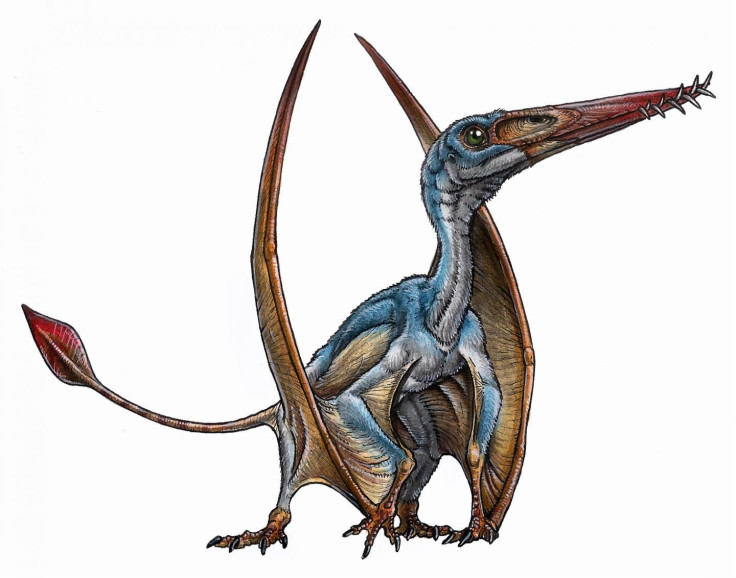New Species Of Pterosaur From Early Jurassic Era Discovered In Patagonia

The Earth was dominated by pre-historic reptiles during the Mesozoic Era, which lasted about 180 million years, offering scientists a valid reason to call it the age of reptiles. Although an extinct group of flying reptiles, called “pterosaurs,” lived during most of this period, scientists had very limited information about this animal, until now.
While scientists so far had some information about the anatomy of pterosaurs’ nervous system based on a few three dimensionally preserved remains, a new study — published in the journal PeerJ on Tuesday — is expected to help scientists better understand the origin, tempo and mode of evolution of these flying reptiles. The latest findings are based on the discovery of a new species of pterosaur from the Patagonia region of South America.
The researchers named the new species “Allkauren koi,” which is derived from the native Tehuelche word “all” for “brain,” and “karuen” for “ancient.” The fossil of “Allkauren koi” included a superbly preserved and uncrushed braincase that sheds light on the origins of the neuroanatomy of this animal and its close relatives.
“Allkaruen, from the middle lower jurassic limit, shows an intermediate state in the brain evolution of pterosaurs and their adaptations to the aerial environment,” Diego Pol, a paleontologist at the Museum of Paleontology Egidio Feruglio in Trelew, Argentina, said in a statement. “As a result, this research makes an important contribution to the understanding of the evolution of all of pterosaurs.”
As part of the study, the scientists used computed tomography — a method of producing a three-dimensional image of the internal structures of a solid object — to observe the skull and the inner ear. They also performed a comprehensive analysis of the evolutionary history of pterosaurs using the latest data and other anatomical features.

According to scientists, pterosaurs had an extraordinary adaptation to flight, including pneumatic bones to lighten its weight, and an elongated finger supporting a wing membrane.
“Pterosaurs first appeared in the Late Triassic and went on to achieve high levels of morphologic and taxonomic diversity during the Mesozoic, with more than 150 species recognized so far,” scientists said in the study.
© Copyright IBTimes 2024. All rights reserved.






















